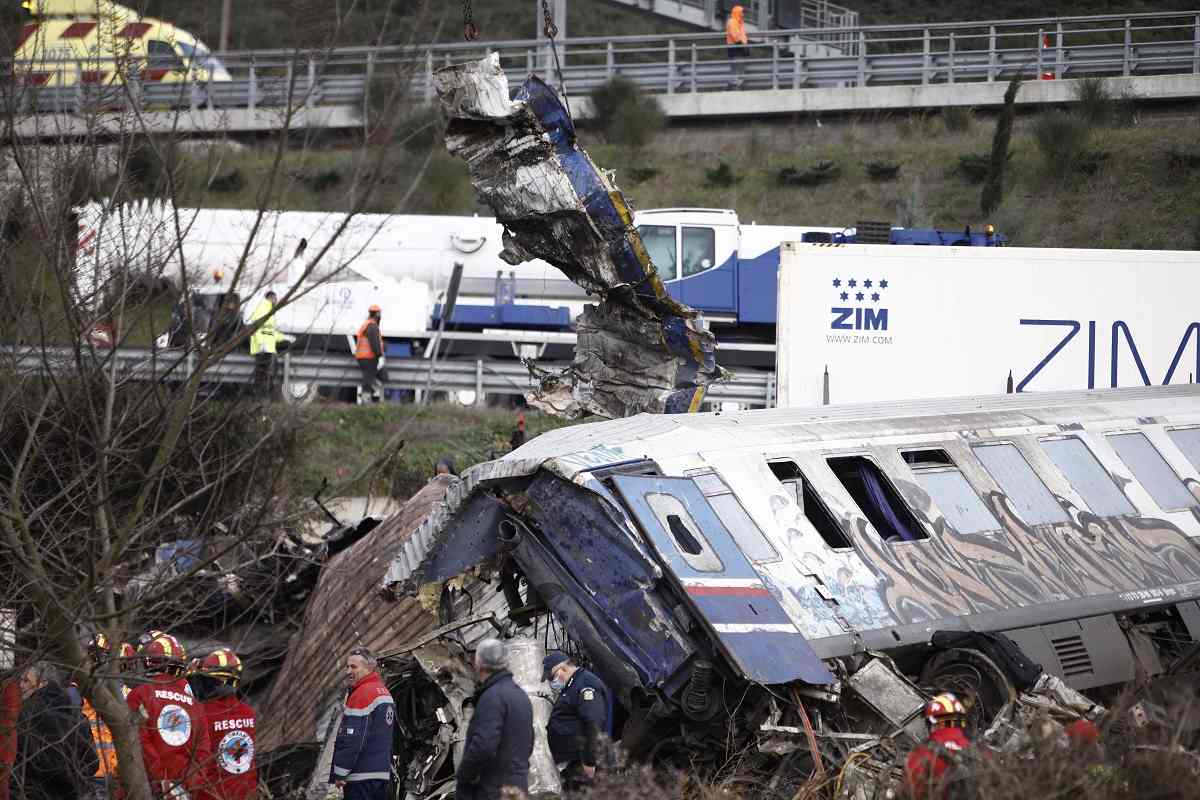
Rescuers stand near debris of trains after a collision in Tempe, about 376 kilometres (235 miles) north of Athens, near Larissa city, Greece, Wednesday, March 1, 2023.
12:04 JST, March 2, 2023
TEMPE, Greece (AP) — Rescuers searched late into the night Wednesday for survivors amid the mangled, burned-out wrecks of two trains that collided in northern Greece, killing at least 43 people and crumpling carriages into twisted steel knots in the country’s deadliest rail crash.
The impact just before midnight Tuesday threw some passengers into ceilings and out the windows.
“My head hit the roof of the carriage with the jolt,” Stefanos Gogakos, who was in a rear car, told state broadcaster ERT. He said windows shattered, showering riders with glass.
Greek Prime Minister Kyriakos Mitsotakis called the collision of the passenger train and a freight train “a horrific rail accident without precedent in our country,” and pledged a full, independent investigation.
He said it appeared the crash was “mainly due to a tragic human error,” but did not elaborate.
The train from Athens to Thessaloniki was carrying 350 passengers, many of them students returning from raucous Carnival celebrations. While the track is double, both trains were traveling in opposite directions on the same line near the Vale of Tempe, a river valley about 380 kilometers (235 miles) north of Athens.
STATIONMASTER ARRESTED; MINISTER RESIGNS
Authorities arrested the stationmaster at the train’s last stop, in the city of Larissa. They did not release the man’s name or the reason for the arrest, but the stationmaster is responsible for rail traffic on that stretch of the tracks. He was due to appear before a prosecutor Thursday to be formally charged.
Transportation Minister Kostas Karamanlis resigned, saying he was stepping down “as a basic indication of respect for the memory of the people who died so unfairly.”
Karamanlis said he had made “every effort” to improve a railway system that had been “in a state that doesn’t befit the 21st century.”
But, he added, “When something this tragic happens, it’s impossible to continue as if nothing has happened.”
The union representing train workers announced a 24-hour strike for Thursday, while protests by left-wing groups broke out in Athens late Wednesday. Athens metro workers also called a 24-hour strike for Thursday, saying they face similar problems as railway employees.
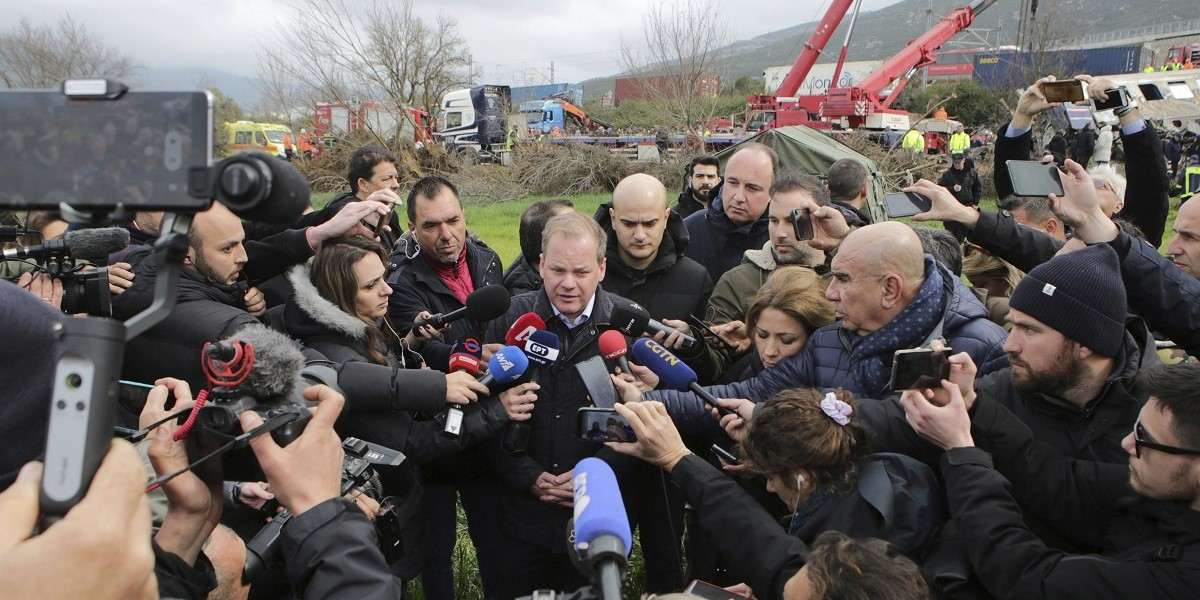
Transport Minister Kostas Karamanlis makes statements to the media during his visit at the location of a collision of the train in Tempe, about 376 kilometres (235 miles) north of Athens, near Larissa city, Greece, Wednesday, March 1, 2023. Karamanlis resigned Wednesday, saying he felt it was his “duty” to step down.
WRECKAGE MAKES RESCUE EFFORTS DIFFICULT
Emergency workers used cranes and other heavy machinery to move large pieces of the trains, revealing more bodies and dismembered remains. The operation was to continue overnight, with firefighters proceeding painstakingly through the wreckage.
“It’s unlikely there will be survivors, but hope dies last,” rescuer Nikos Zygouris said.
Larissa’s chief coroner, Roubini Leondari, said 43 bodies had been brought to her for examination and would require DNA identification as they were largely disfigured.
“Most (of the bodies) are young people,” she told ERT. “They are in very bad condition.”
Greece’s firefighting service said 57 people remained hospitalized late Wednesday, including six in intensive care. More than 15 others were discharged after receiving treatment.
More than 200 people who were unharmed or suffered minor injuries were taken by bus to Thessaloniki, 130 kilometers (80 miles) to the north. Police took their names as they arrived, in an effort to track anyone who may be missing.
Hellenic Train, which operates all of Greece’s passenger and cargo trains, including those that collided, offered its “heartfelt condolences” to the victims’ families. The company belongs to Italy’s state railways.
Eight rail employees were among the dead, including the two drivers of the freight train and the two drivers of the passenger train, according to Yannis Nitsas, president of the Greek Railroad Workers Union.
The union called the one-day strike to protest what it said was chronic neglect of Greece’s railways by successive governments.
“Unfortunately, our long-standing demands for staff hirings, better training and above all use of modern safety technology always end up in the wastepaper basket,” it said in a statement.
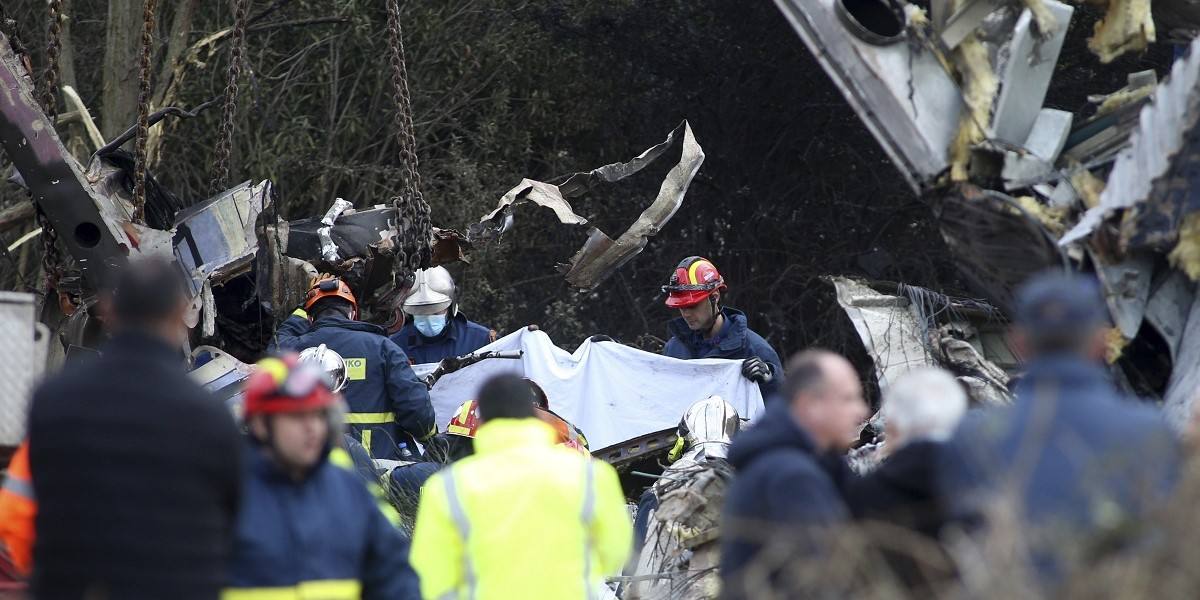
Firefighters collect a body after a collision in Tempe, about 376 kilometres (235 miles) north of Athens, near Larissa city, Greece, Wednesday, March 1, 2023.
PASSENGERS SAY TRAIN CRASH WAS LIKE AN EXPLOSION
A teenage survivor who did not give his name to reporters said that just before the crash he felt sudden braking and saw sparks — and then there was a sudden stop.
“Our carriage didn’t derail, but the ones in front did and were smashed,” he said, visibly shaken. He used a bag to break the window of his car, the fourth, and escape.
Gogakos said the crash felt like an explosion, and some smoke entered the carriage. He said some passengers escaped through windows but that after a few minutes, crew members were able to open the doors and let people out.
Multiple cars derailed, and at least one burst into flames.
“Temperatures reached 1,300 degrees Celsius (2,372 degrees Fahrenheit), which makes it even more difficult to identify the people who were in it,” fire service spokesperson Vassilis Varthakoyiannis said.
A man who was trying to ascertain the fate of his daughter, who was on the train, said he had a harrowing phone conversation with her before she was cut off.
“She told me, ‘We’re on fire. … My hair is burning,'” he told ERT, without giving his name.
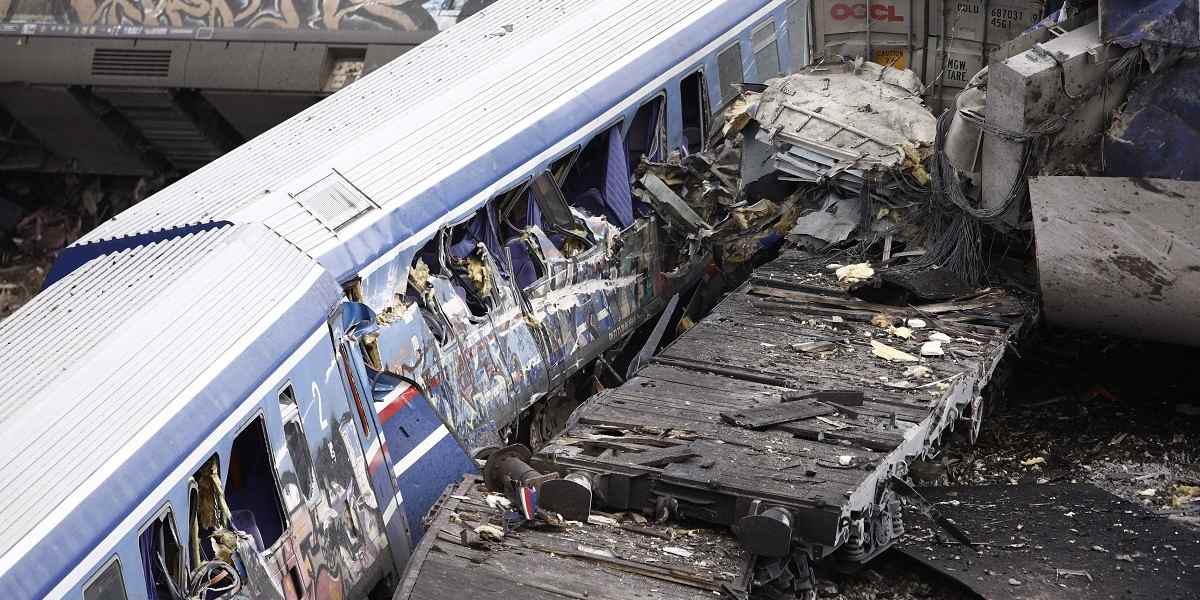
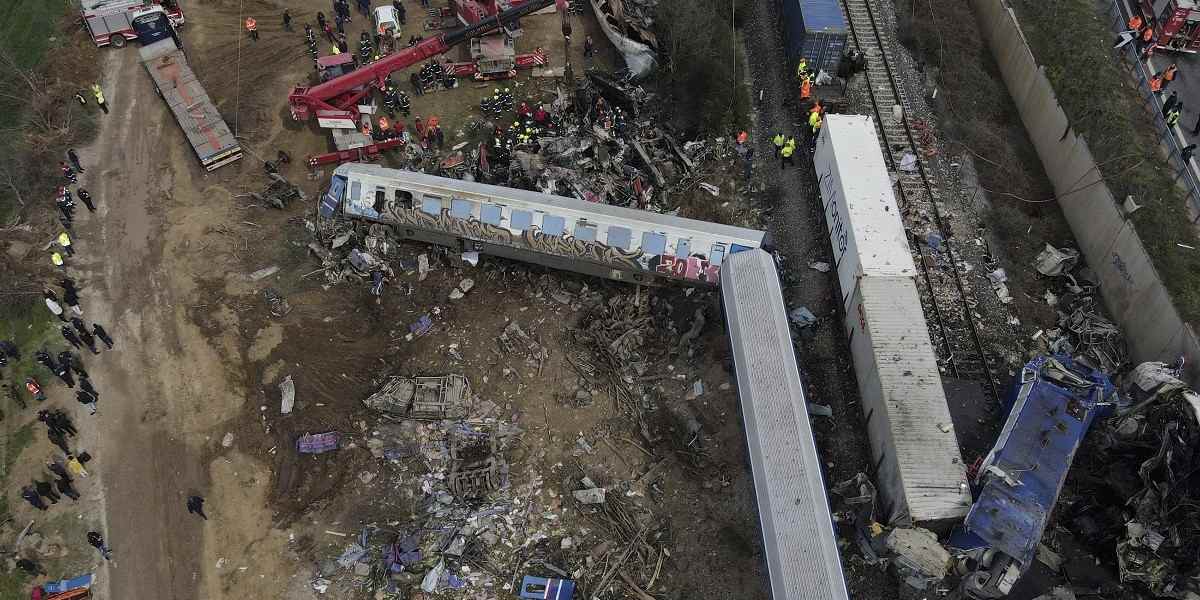
Debris of trains lie on the rail lines after a collision in Tempe, about 376 kilometres (235 miles) north of Athens, near Larissa city, Greece, Wednesday, March 1, 2023.
GREECE GOES FROM CARNIVAL TO MOURNING
Many of the passengers were students returning to Thessaloniki from Carnival, but officials said but no detailed passenger list was available. This year was the first time the festival, which precedes Lent, was celebrated in full since the start of the pandemic in 2020.
The government declared three days of national mourning from Wednesday, while flags flew at half-staff outside all European Commission buildings in Brussels.
Visiting the accident scene, Prime Minister Mitsotakis said the government must help the injured recover and identify the dead.
“I can guarantee one thing: We will find out the causes of this tragedy, and we will do all that’s in our power so that something like this never happens again,” Mitsotakis said.
It was the country’s deadliest rail crash on record. In 1968, 34 people died in a crash in the southern Peloponnese region.
Greek President Katerina Sakellaropoulou broke off an official visit to Moldova to visit the scene, laying flowers beside the wreckage.
Pope Francis offered condolences to the families of the dead in a message sent to the president of the Greek bishops conference by the Vatican’s secretary of state,
Condolences poured in from around the world, including neighboring Turkey, Greece’s historic regional rival. Turkish President Recep Tayyip Erdogan expressed sorrow and wishes for a speedy recovery for those injured, his office said.
Despite the frosty relations between the two NATO members, Greece’s leadership had called Erdogan last month following a massive earthquake that killed tens of thousands in Turkey.
In Athens, several hundred members of left-wing groups marched late Wednesday to protest the train deaths. Minor clashes broke out as some protesters threw stones at the offices of Greece’s rail operator and riot police and set dumpsters on fire. No arrests or injuries were reported.
"News Services" POPULAR ARTICLE
-

American Playwright Jeremy O. Harris Arrested in Japan on Alleged Drug Smuggling
-

Japan’s Nikkei Stock Average as JGB Yields, Yen Rise on Rate-Hike Bets
-

Japan’s Nikkei Stock Average Licks Wounds after Selloff Sparked by BOJ Hike Bets (UPDATE 1)
-

Japan’s Nikkei Stock Average Buoyed by Stable Yen; SoftBank’s Slide Caps Gains (UPDATE 1)
-

Japanese Bond Yields Zoom, Stocks Slide as Rate Hike Looms
JN ACCESS RANKING
-

Keidanren Chairman Yoshinobu Tsutsui Visits Kashiwazaki-Kariwa Nuclear Power Plant; Inspects New Emergency Safety System
-

Imports of Rare Earths from China Facing Delays, May Be Caused by Deterioration of Japan-China Relations
-

University of Tokyo Professor Discusses Japanese Economic Security in Interview Ahead of Forum
-

Tokyo Economic Security Forum to Hold Inaugural Meeting Amid Tense Global Environment
-

Japan Pulls out of Vietnam Nuclear Project, Complicating Hanoi’s Power Plans


























